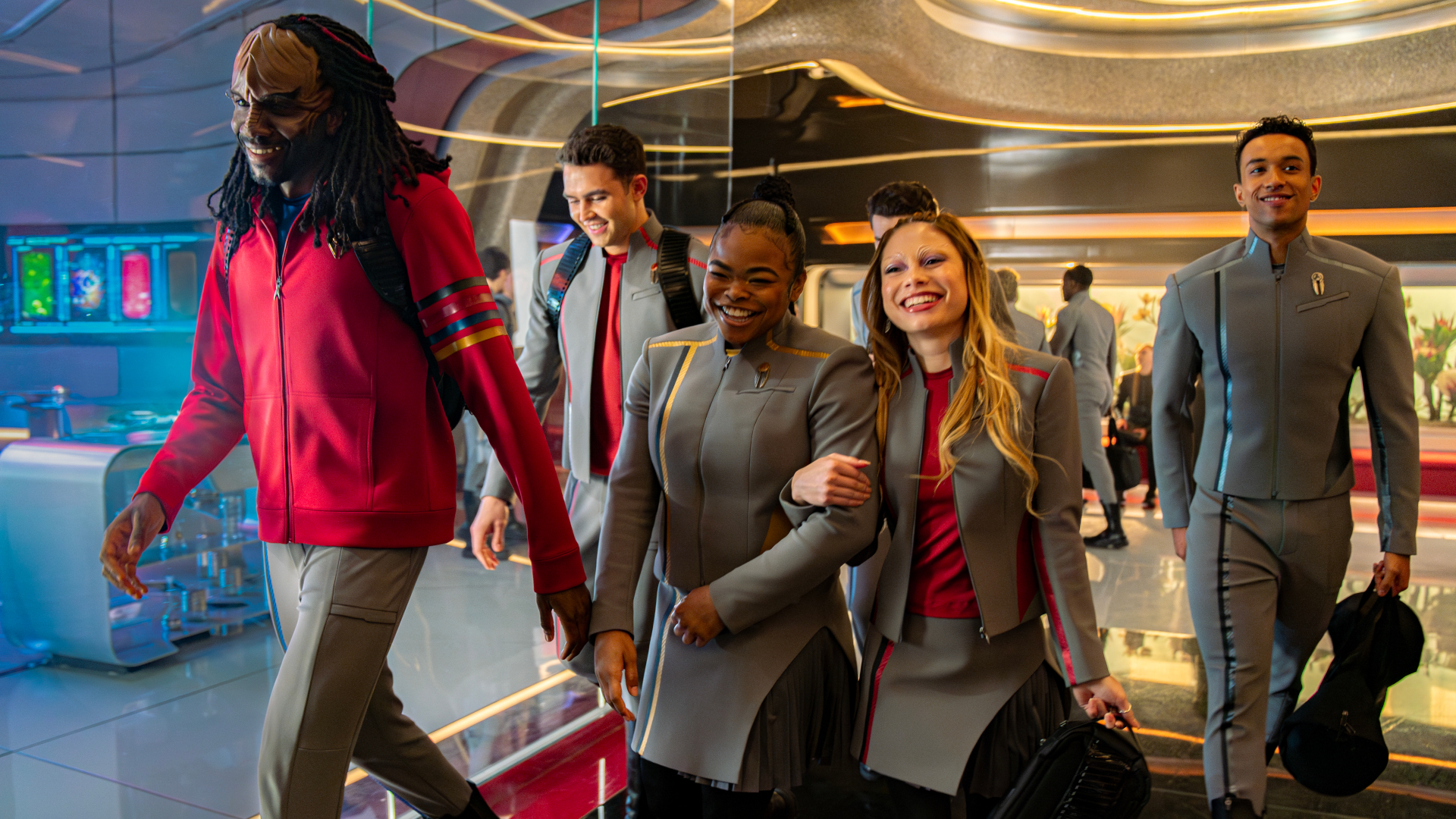Boeing's 1st Starliner Spacecraft Lands in New Mexico After Shortened Test Flight
"It looked almost ghostly as it touched down."
Boeing's first Starliner spacecraft built to fly astronauts returned to Earth in a predawn landing Sunday (Dec. 22), touching down in New Mexico after a shortened — yet still historic — test flight due to a timing error.
The uncrewed Starliner landed in the chilly desert of White Sands Space Harbor in New Mexico at 7:58 a.m. EST (1258 GMT), making history as the first crew-capable space capsule ever to make a land-based touchdown on U.S. soil. The landing capped a three-day Orbital Test Flight mission that began with a launch on Friday (Dec. 20).
"Watching the landing was a thing of beauty today," NASA Administrator Jim Bridenstine told Boeing and NASA flight controllers at Mission Control in Houston, according to NASA commentators.
Video: Watch Boeing's Starliner Spacecraft Land for 1st Time
More: Boeing's 1st Starliner Flight Test in Photos
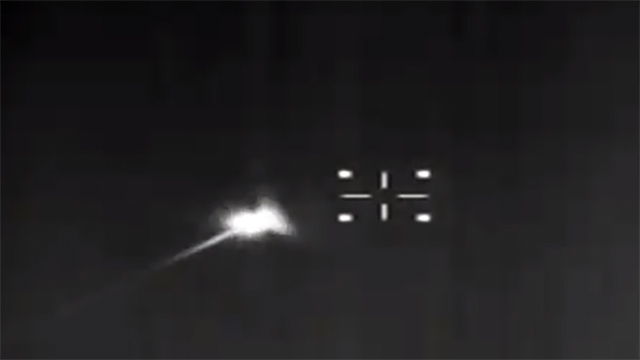
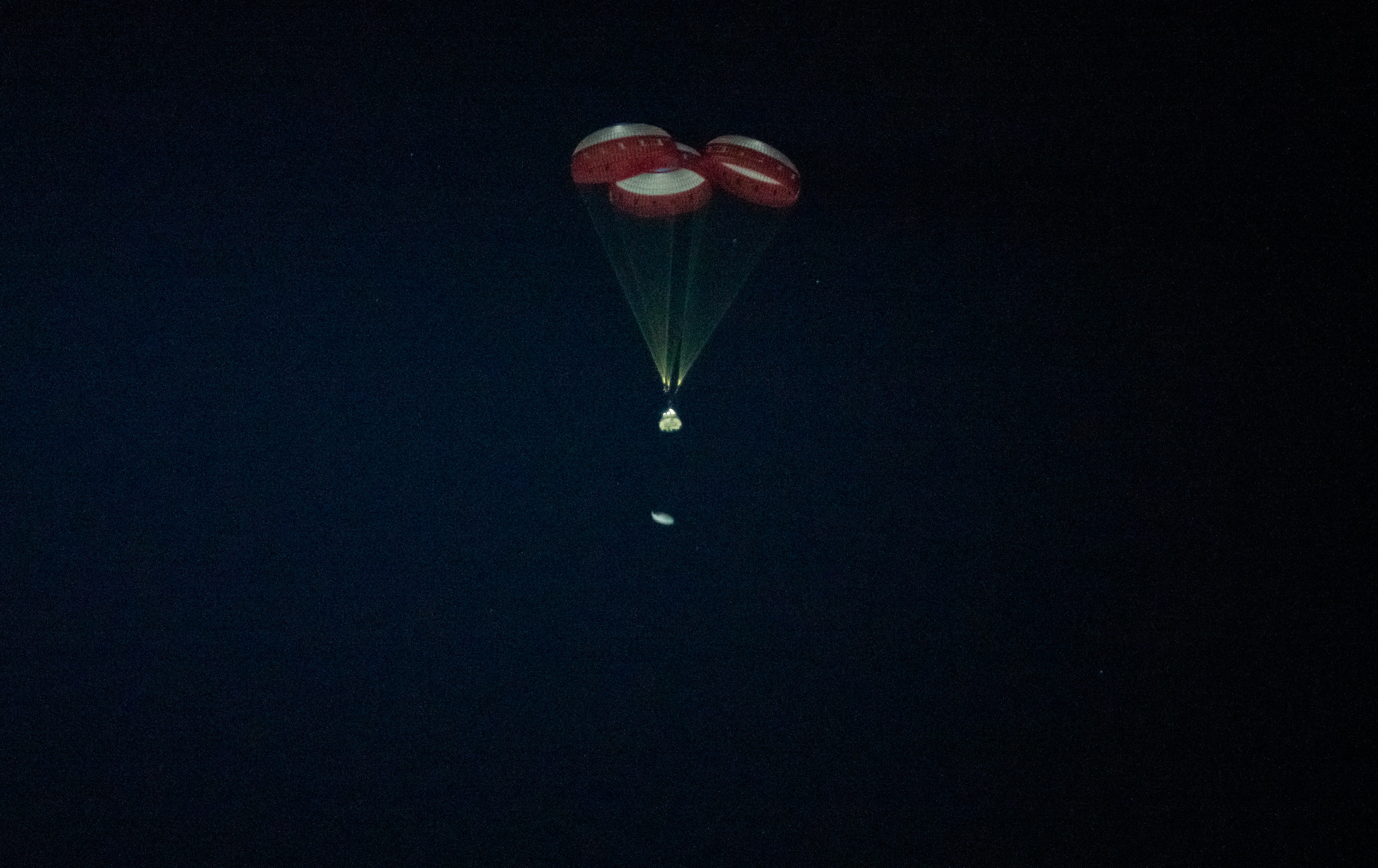

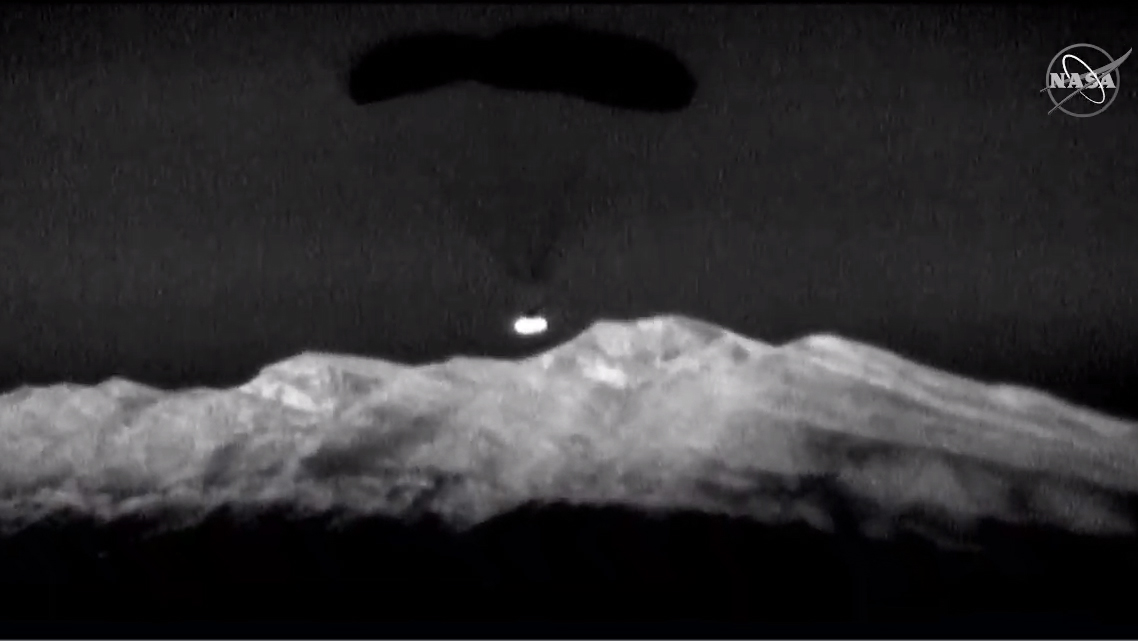

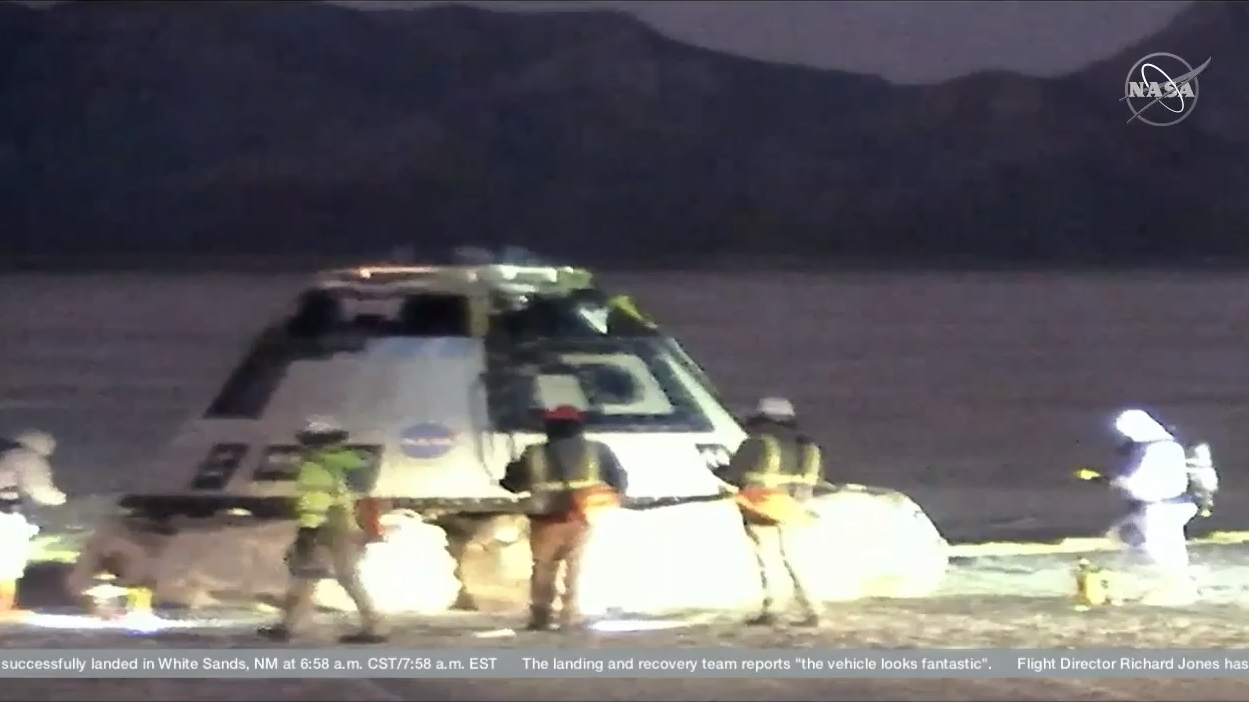
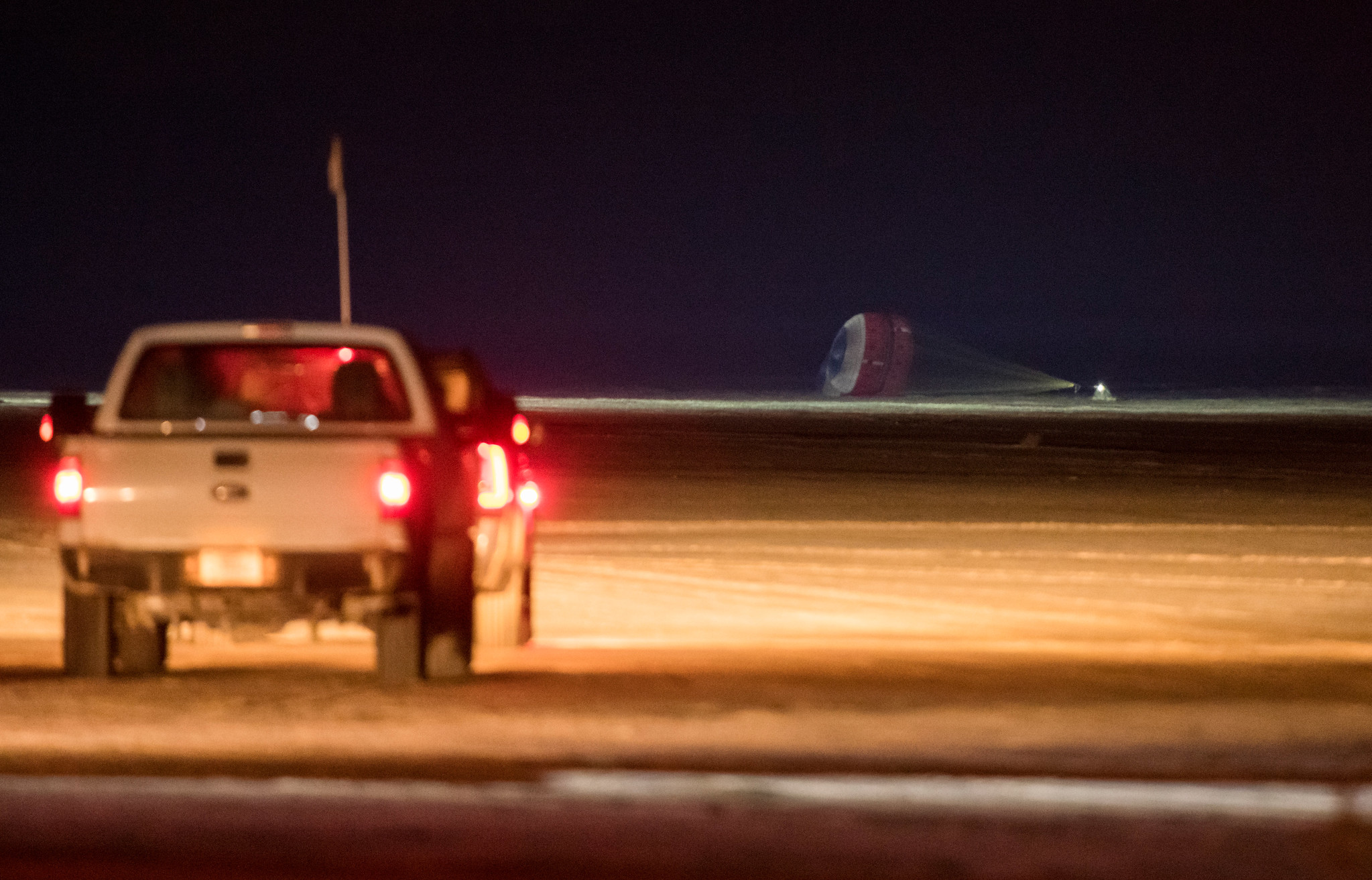

A ghostly landing
It was 5:58 a.m. local time at the landing site as Starliner drifted back to Earth under darkness, its three main parachutes billowing in infrared views.
"It looked almost ghostly as it touched down," Boeing spokesperson Josh Barrett said from the landing site in NASA commentary. NASA and Boeing recovery teams (and astronauts who will fly on Starliner) were awaiting Starliner's return to retrieve the vehicle.
"Soft landing in the desert!" NASA astronaut Mike Fincke, who will fly on the first crewed Starliner test flight (called Crew Flight Test) next year, wrote on Twitter from White Sands Space Harbor. He also shared a photo of the spacecraft.
Breaking space news, the latest updates on rocket launches, skywatching events and more!
Starliner experienced scorching hot temperatures of up to 3,000 degrees Fahrenheit (1,650 degrees Celsius) as it plunged through Earth's atmosphere at Mach 25, or 25 times the speed of sound. It jettisoned that heat shield after its parachutes deployed.
The spacecraft cushioned its landing with six airbags, touching down at about 19 mph (30 km/h). NASA and Boeing watched the spacecraft from the ground and air using infrared cameras.
"It has been an absolutely amazing morning. I'm really trying to keep it together and not cry,," Boeing engineer Tori Wills Pedrotty, who worked on the heat shield, said during commentary."We landed an American capsule on land with an airbag system. This is the first time anybody has done this."
Starliner's shakedown cruise
Starliner was originally scheduled to spend eight days in orbit, flying an automated mission to the International Space Station and returning to Earth to demonstrate the vehicle's readiness to ferry astronauts for NASA. But a mission clock error during launch prevented Starliner from reaching its intended orbit and continuing on to the space station.
According to Boeing, Starliner's mission clock thought the spacecraft was in a different, later phase of the flight for an as yet unknown reason. Boeing was able to reset the clock, but not before it used too much propellant to fly to the station.
Instead, Starliner entered a stable orbit of 155 miles (250 km), circled Earth 33 times and performed as many tests as possible to shake down its systems for future crewed flights.
While Boeing aced many of its demonstrations for NASA on this flight, it was not able to show Starliner's ability to dock itself at the International Space Station, a critical capability required for crewed flight. Bridenstine has said NASA is keeping its options open to decide whether to launch the first crewed test flight (called Crew Flight Test) on the next Starliner or require Boeing to perform a second uncrewed test flight.
Related: Boeing's CST-100 Starliner Space Capsule (Infographic)
The crew for that first Starliner to carry astronauts was onhand for its smooth landing Sunday. In addition to Fincke, the crew includes NASA astronaut Nicole Mann and Boeing astronaut Chris Ferguson, a former space shuttle commander.
"Three parachutes, six airbags and a beautiful soft landing," Fincke said. "I can't wait to try it out."
Fincke and his crewmates said they were confident Boeing and NASA would fix the timing error (which indeed was fixed after launch, just not in time to reach the space station) to clear the way for crewed flights next year.
Chief among those tests was the flight of "Rosie the Rocketeer," an anthropomorphic test dummy in a Boeing spacesuit covered in sensors to measure what astronauts would actually feel during launch and landing. Rosie flew aboard Starliner in an astronaut's seat and was part of 595 lbs. (270 kilograms) of cargo packed inside the spacecraft.
Starliner is one of two commercial spacecraft (SpaceX's Crew Dragon is the other) selected by NASA to fly astronauts to and from the International Space Station. It is designed to launch four astronauts and supplies into space, return them to Earth and then fly again. The reusable spacecraft is expected to fly up to 10 times, Boeing has said.
NASA picked Boeing and SpaceX as its Commercial Crew Program partners in 2014, with Boeing receiving $4.2 billion under that contract and SpaceX receiving $2.6 billion for its deal. Both companies have now flown uncrewed test flights of their vehicles (SpaceX's Crew Dragon flew to the space station in March of this year) and are expected to begin flying astronauts in early 2020.
This particular Starliner will fly on Boeing's second crewed flight, which will be NASA's first operational flight to the station. Sunita Williams, one of the astronauts who will command that mission, was at White Sands Space Harbor to see her spacecraft return to Earth.
"It was really unbelievable. It was picture perfect," Williams said of the landing, adding that she's picked the name Calypso for the capsule in honor of sea exploration.
"She's back," Williams said of the capsule. "She's home."
- Boeing in Space: The Latest News, Images and Video
- How Boeing's Starliner Orbital Flight Test Works: A Step-By-Step Guide
- Starliner's Atlas V Rocket Ride Is Wearing a 'Skirt' for Launch. Here's Why.
Email Tariq Malik at tmalik@space.com or follow him @tariqjmalik. Follow us @Spacedotcom, Facebook and Instagram.


Tariq is the award-winning Editor-in-Chief of Space.com and joined the team in 2001. He covers human spaceflight, as well as skywatching and entertainment. He became Space.com's Editor-in-Chief in 2019. Before joining Space.com, Tariq was a staff reporter for The Los Angeles Times covering education and city beats in La Habra, Fullerton and Huntington Beach. He's a recipient of the 2022 Harry Kolcum Award for excellence in space reporting and the 2025 Space Pioneer Award from the National Space Society. He is an Eagle Scout and Space Camp alum with journalism degrees from the USC and NYU. You can find Tariq at Space.com and as the co-host to the This Week In Space podcast on the TWiT network. To see his latest project, you can follow Tariq on Twitter @tariqjmalik.
